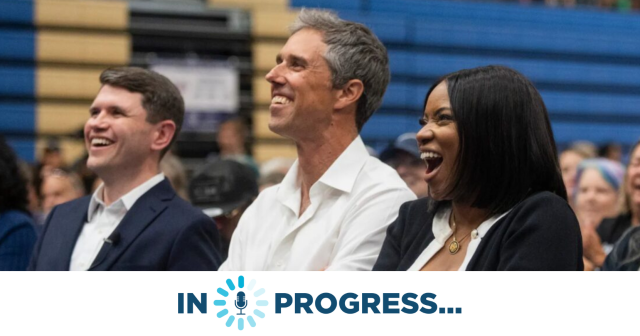On Sunday, a bipartisan group of 20 senators led by Sens. Chris Murphy (D-Conn.), John Cornyn (R-Texas), Kyrsten Sinema (D-Ariz.), and Thom Tillis (R-N.C.) announced the beginnings of a gun safety deal. The deal comes after back-to-back mass shootings at a grocery store in Buffalo, NY and at Robb Elementary school in Uvalde, TX. President Joe Biden, Senate Minority Leader Mitch McConnell, Senate Majority Leader Chuck Schumer, and Speaker Nancy Pelosi have all signaled support for the bipartisan deal.
Still very much a work in progress, the framework lays out a list of proposals, but as of yet no legislative text has been written. The Senate has a challenging path ahead of them if they are to maintain bipartisan support and hold the final vote before Congress leaves for recess in less than two weeks.
What the deal is set to include:
- State funding for red-flag laws
A major part of the framework is a proposal to help states create and implement red-flag laws. Red-flag laws, also called Extreme Risk laws, allow loved ones or law enforcement to intervene by petitioning a court for an order to temporarily prevent someone in crisis from accessing guns.
This legislation is not a national red-flag law, but rather would provide funding to incentivize states to pass red flag laws of their own and would provide funds to states that already have red-flag laws to improve their implementation. Crucially, this reform is completely voluntary and there is no guarantee that states like Texas will ever pass red-flag legislation.
- Mental health and telehealth investment
The framework also includes investments in mental health and suicide prevention programs. A non-negotiable addition for Senate Republicans who have taken to blaming gun violence on mental health, a political strategy that only serves to divert attention from meaningful gun reform and stigmatize mental illness. Regarding gun violence, mental health investments should instead focus on helping the survivors and families of victims of gun violence recover.
The United States has similar rates of mental illness to other countries but much higher rates of gun violence. People with mental illnesses are much more likely to be victims of violence rather than perpetrators. The problem isn’t mental health, it’s easy access to guns. The violent perpetrators of mass shootings are more likely to be people radicalized by racist conspiracy theories than people diagnosed with mental illness. The problem isn’t mental health, it’s racism, xenophobia, and misogyny.
- Closing the boyfriend loophole
Currently, only a person who has been married to, lived with, or had a child with a partner they've been convicted of abusing are blocked from having a gun. Closing the loophole means that anyone who has been deemed to have been in a serious dating relationship and convicted of domestic violence would no longer be eligible to own a gun. Closing the boyfriend loophole would save countless lives considering that the proportion of murders committed by dating partners versus spouses is about equal. According to the Dallas Morning News, the boyfriend loophole provision of the gun deal has hit some bumps in the road during the drafting process.
- Enhanced review process for buyers under 21
Rather than raising the age to purchase an assault-style weapon, the senators have proposed expanding the review process for people between the ages of 18-21 who want to buy a gun like an AR-15. The updated background check review would require a thorough investigation into any disqualifying mental health or juvenile records. The National Instant Criminal Background Check System (NICS) would have three days to conduct the search that could be extended to a total of 10 days if necessary.
The bipartisan gun deal is also set to include a provision that would make more firearm sellers Federally Licensed Firearm dealers, making them subject to conducting background checks under federal law. The deal also includes a provision with expanded criminal penalties for straw purchasing and funding to help schools expand their safety measures and ‘violence prevention’ efforts.
Noticeably missing from the bipartisan gun deal are provisions for expanded background checks, raising the minimum age of purchase to 21 for assault-style rifles, and a ban on assault weapons and high-capacity magazines. All disheartening oversights considering how the Uvalde and Buffalo shooters, both 18-year-olds, would never have had access to an assault rifle under these measures.
The bipartisan nature of the gun deal means Democrats are being forced to cede important common-sense gun reform measures to Republican diversionary measures. Things like mental health investments and school safety measures such as arming teachers and an increased police presence are distractions from the real issue: guns.
The bipartisan gun deal is disappointing to many gun violence advocates. It is unfortunate in this current political climate that the only solution we can offer to the families of gun violence victims is a framework that can only be described as, “better than nothing.” However, let’s still acknowledge the progress encapsulated in this bipartisan deal, the first significant gun reform measure in the Senate since the assault-weapon ban in 1994. And while any progress is much appreciated, the excruciatingly slow progress of gun reform has proven to be fatal for many. We must continue to fight for better, while also celebrating small victories like these.
For now, we’re waiting to see what the final version of this proposal looks like. But in the meantime, you can send a message to your senator urging them to vote in favor of common-sense gun reform and to keep pushing for policies like red flag laws, universal background checks, an assault weapons ban, and more.
DONATE
Your donation supports our media and helps us keep it free of ads and paywalls.









